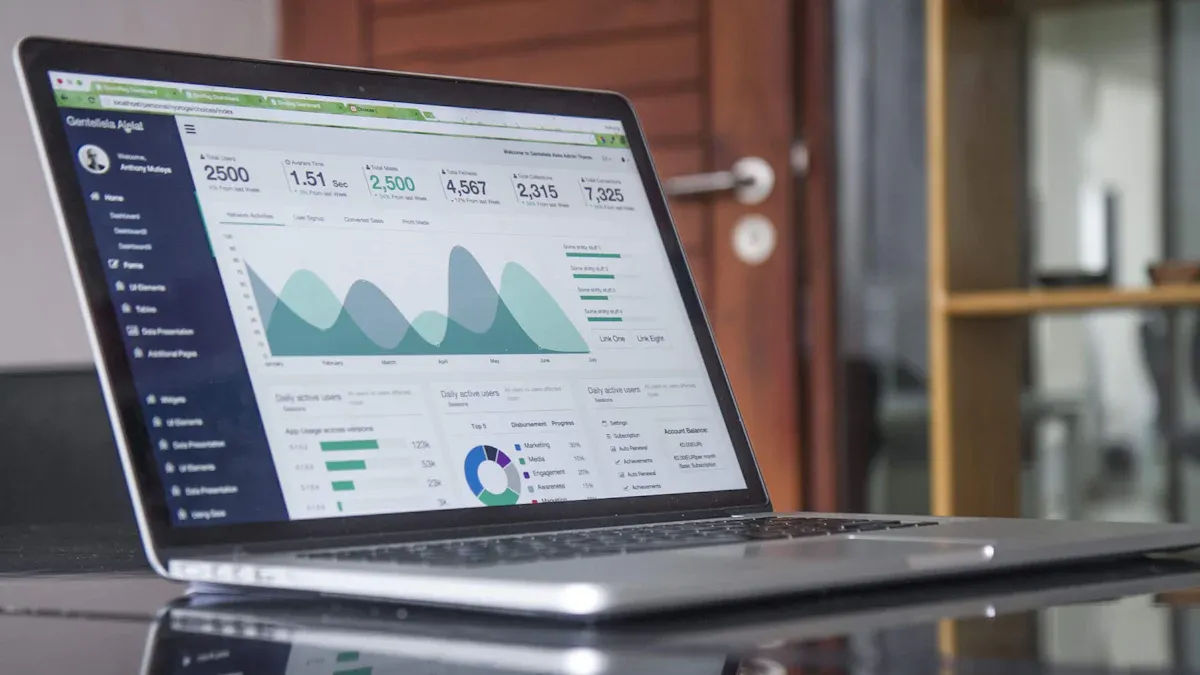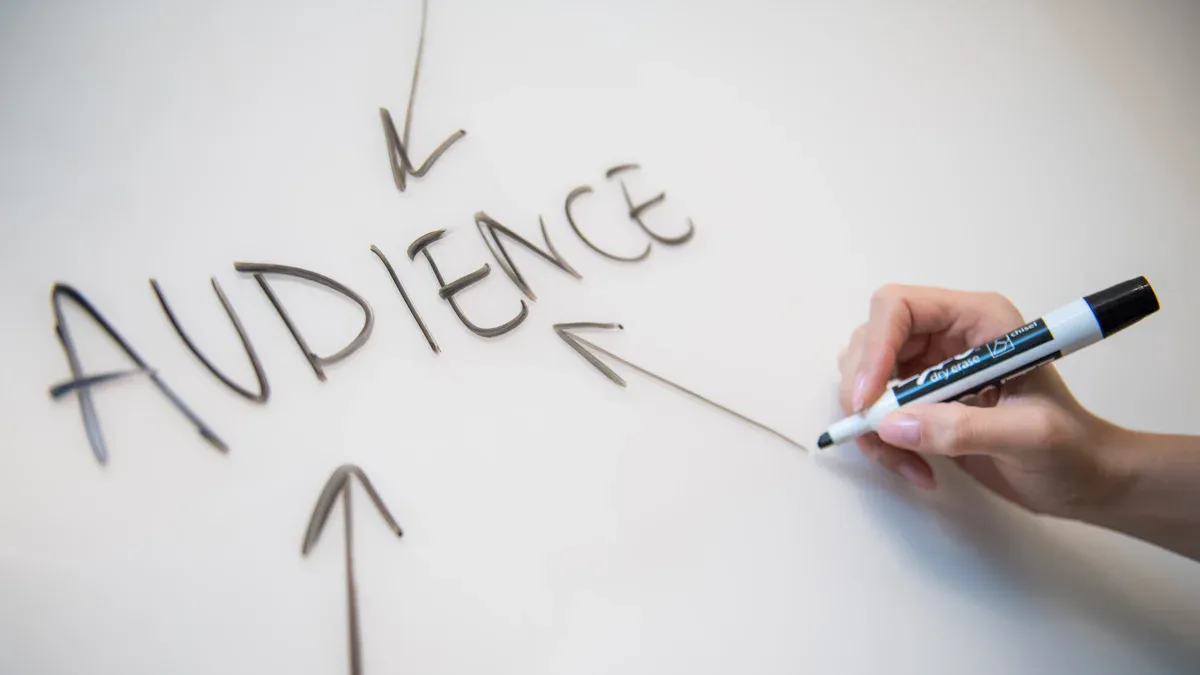What Is a Marketing Funnel in Advertising and How Does It Work

A marketing funnel in advertising shows how you guide people from first learning about your brand to becoming loyal customers. Funnels of marketing ads help you understand each step a customer takes, from seeing an ad to making a purchase. Many businesses have used this idea for over a century. Today, you see its impact everywhere, from search engines to email marketing.
Aspect | Statistic / Insight |
|---|---|
Business Prioritization | |
Content Marketing Usage | 91% of B2B marketers use content marketing at the funnel’s start. |
Paid Advertising ROI | $2 earned for every $1 spent on Google Ads. |
Customer Reviews Influence | 93% of consumers read reviews before buying. |
Marketing experts like Tom Roach say the funnel remains vital today, even as technology and consumer habits change.
Key Takeaways
A marketing funnel guides people from first hearing about your brand to becoming loyal customers by breaking the journey into clear steps.
Each funnel stage—awareness, consideration, decision, and loyalty—needs different ads and messages to match what customers want at that time.
Using the right tactics at each stage, like content marketing for awareness and clear calls to action for decisions, helps move people smoothly through the funnel.
Tracking key numbers like conversion rates and customer retention shows how well your funnel works and where to improve.
Tools like marketing automation and funnel mapping help you understand customer behavior and make your marketing more effective.
Marketing Funnel Basics

What Is a Marketing Funnel
A marketing funnel is a model that helps you understand how people become customers. You start by reaching a wide audience at the top. As people move through the funnel, some show more interest and get closer to making a purchase. This idea began in traditional advertising, where companies used billboards and print ads to catch attention. Over time, the funnel evolved to fit digital marketing, where customers interact with brands in many ways before buying.
The funnel concept comes from the AIDA model, which stands for Awareness, Interest, Desire, and Action. Elias St. Elmo Lewis created this model in the late 1800s. William W. Townsend later connected the funnel shape to these stages in 1924. The funnel shows how you guide people from learning about your brand to taking action, like making a purchase. Today, you see this model in many forms, but the main idea stays the same.
The marketing funnel gives you a clear path to follow, even as shopping habits change. It helps you organize your marketing and reach people at the right time.
Purpose in Advertising
You use a marketing funnel to guide customers from their first interaction with your brand to becoming loyal buyers. Funnels of marketing ads help you break down the customer journey into steps. Each stage lets you focus your message and tactics to match what your audience needs.
The funnel helps you:
Organize your marketing efforts.
Target the right people at each stage.
Nurture leads so they are more likely to buy.
Build loyalty and encourage repeat purchases.
Research shows that nurtured leads spend 47% more than those who are not nurtured. Upselling to existing customers is also much more cost-effective than finding new ones. By using the funnel, you can improve your results and make smarter decisions. You can also measure your success at each stage, so you know what works best.
When you use a marketing funnel, you create a better experience for your customers and help your business grow.
Funnels of Marketing Ads
Stages Overview
Funnels of marketing ads show you how people move from learning about your brand to becoming loyal customers. You might also hear these called purchase funnels, sales funnels, or conversion funnels. Each name describes the same idea: guiding someone step by step until they take action, like making a purchase or signing up for a service.
You start with a wide group of people at the top. These are people who may not know your brand yet. As they move through the funnel, some drop off, but others get more interested. By the end, you have a smaller group who are ready to buy or support your business. This shape helps you see where you lose people and where you can improve.
Funnels of marketing ads help you focus your efforts at each stage. You can use different ads, messages, and offers to match what your audience needs as they move forward.
Many businesses see strong results when they use funnels of marketing ads. Here are some key facts:
The average conversion rate for sales funnels across industries is about 2.35%.
Companies with well-organized funnels can see revenue growth up to 18 times greater than those without.
Personalized calls to action work 202% better than standard ones.
Retargeted ads can boost conversion rates by 147%.
Landing pages with a single clear call to action convert at an average rate of 13.5%, much higher than the typical rate.
You can see that funnels of marketing ads are not just a theory. They deliver real results when you use them well.
Customer Journey
The customer journey describes the path people take from first hearing about your brand to becoming loyal fans. Funnels of marketing ads map out this journey in clear stages. You start with awareness, move to consideration, then decision, and finally reach loyalty.
Here is how the journey usually looks:
Awareness: People see your ad or hear about your brand for the first time. You use broad campaigns to reach as many as possible.
Consideration: Some people want to learn more. They might visit your website, read reviews, or watch a video. Engagement campaigns work well here.
Decision: Now, people are ready to act. They might sign up, buy a product, or contact you. Conversion-focused ads help at this stage.
Loyalty: After buying, some customers come back again and again. You can use loyalty programs, special offers, or retargeting ads to keep them engaged.
The journey is not always a straight line. People can move back and forth between stages or skip some steps. Funnels of marketing ads help you track these movements and adjust your strategy.
To understand your customers better, you can use surveys, website analytics, and feedback. Many companies use tools to map out every touchpoint, from the first ad to post-purchase support. For example, an e-commerce company improved its conversion rate by over 25% in three months by making the checkout process easier and adding guest checkout options. Another business reduced customer churn by 15% with targeted loyalty programs.
You can also use funnel visualization tools to see where people drop off. Heatmaps and A/B testing help you find the best ways to guide customers through each stage. Companies that use these methods often see higher conversion rates and more loyal customers.
Funnels of marketing ads give you a clear way to guide people from first contact to lasting loyalty. When you understand each stage, you can create better ads, improve your results, and grow your business.
Funnel Stages Explained

Awareness
You start the journey by helping people notice your brand. At this stage, you want to reach as many people as possible. You do not push for a sale right away. Instead, you focus on building brand awareness and trust.
Share stories and educational content that show how your product solves problems.
Use social media, videos, and infographics to highlight common issues or desires.
Personalize your message to match what people like and need.
Reach out through blogs, forums, and even podcasts to cast a wide net.
Use SEO to attract people searching for general topics in your industry.
This approach helps people recognize a need they did not know they had. When you align your message with their stage of awareness, you build trust and position your brand as a helpful guide.
Consideration
In the consideration stage, people start to compare options. They want to learn more about your product or service.
Most shoppers (81%) research online before buying, so quality content and SEO matter here.
Offer case studies, product demos, and customer reviews to answer questions and address doubts.
Lead nurturing works well. Companies that nurture leads generate 50% more sales-ready leads at a 33% lower cost.
Track how long people spend on your product pages and how many sign up for more information.
Vivid and positive content from your brand and happy customers can make a big difference. Strong brand reputation also helps people feel confident in their choice.
Decision
At this stage, people are ready to act. You want to make it easy for them to buy or sign up.
Action Step | Why It Matters |
|---|---|
Clear calls to action | Encourage quick decisions |
Simple checkout process | Reduce drop-offs and frustration |
Limited-time offers | Create urgency and boost conversions |
Personalized suggestions | Make offers more relevant and appealing |
Track conversion rates, cart abandonment, and revenue growth to see how well you guide people through this stage. Use A/B testing and funnel alerts to spot and fix any problems.
Loyalty
After someone buys, you want them to come back. Loyal customers help your business grow.
Increasing retention by just 5% can boost profits by 25-95%.
Loyal customers often recommend your brand to others.
Use loyalty programs, exclusive discounts, and great service to keep people coming back.
Send personalized follow-up emails and offers.
Use automation tools to make sure you reach out at the right time.
Funnels of marketing ads help you nurture these relationships and turn buyers into fans.
Strategies and Measurement
Tactics for Each Stage
You need different advertising strategies for each stage of the marketing funnel. This step-by-step approach helps you guide people from learning about your brand to becoming loyal customers. Here is how you can match your tactics to each stage:
Funnel Stage | Tactics You Can Use | Example Action |
|---|---|---|
Awareness | Content marketing, SEO, social media ads, influencer partnerships, video ads | Share blog posts or run video campaigns to reach new audiences |
Interest | Email marketing, webinars, interactive content, product guides, explainer videos | Offer a free template or host a live demo to engage interested users |
Consideration | Case studies, testimonials, free trials, comparison guides, retargeting ads, live chat | Share customer stories or offer a free trial to build trust |
Decision/Conversion | Clear calls to action, personalized offers, easy checkout, urgency tactics, customer reviews | Use limited-time discounts or display positive reviews to encourage purchases |
When you use the right tactic at the right time, you move people smoothly through the funnel and increase your chances of success.
Measuring Funnel Success
You need to track key metrics to see how well your funnel works. These numbers show where you do well and where you can improve. Here are some important metrics to watch:
Funnel conversion rate: How many leads move from one stage to the next.
Lead generation rate: Number of new leads you get over time.
Customer acquisition cost (CAC): How much you spend to get a new customer.
Conversion rate: Percentage of users who take the action you want, like buying or signing up.
Customer retention rate: How many customers come back.
Customer Lifetime Value (CLV): How much money you earn from a customer over their time with you.
Tracking these numbers helps you make smart decisions and improve your results.
Tools and Tips
You can use many tools to track and improve your funnel. Marketing automation tools help you send the right message at the right time. Funnel mapping tools like Funnelytics let you see every step your customers take. Hotjar shows you where people drop off with heatmaps and recordings. ClickFunnels gives you templates and automation to build and test funnels quickly.
Use A/B testing to find out what works best.
Personalize your emails and website content for each user.
Set clear goals for every funnel stage.
Segment your audience to send more relevant messages.
Always ask for feedback to keep improving.
Businesses that use live chat support see higher loyalty and sales. When you use the right tools and keep testing, you make your funnel stronger and your results better.
Understanding and using a marketing funnel helps you guide customers from first contact to loyalty. Research shows that meeting key conditions at each stage, like customer satisfaction and product experience, leads to better results. Automation and strong positioning also boost your success. Take time to review your funnel, find areas to improve, and test new strategies.
Start refining your funnel today to see stronger marketing outcomes and lasting customer relationships.
FAQ
What is the main goal of a marketing funnel?
You use a marketing funnel to guide people from learning about your brand to becoming loyal customers. The funnel helps you organize your marketing and improve your results at each stage.
How do you know if your funnel works?
You track key metrics like conversion rates, customer retention, and lead generation. These numbers show you where people drop off and where you succeed.
Tip: Use analytics tools to see your funnel’s performance.
Can small businesses use marketing funnels?
Yes, you can use a marketing funnel no matter your business size. Start with simple steps like social media ads and email follow-ups.
Focus on clear goals
Track your results
Adjust your tactics as you grow
What tools help manage a marketing funnel?
You can use tools like HubSpot, ClickFunnels, or Google Analytics. These tools help you track customer actions, automate messages, and improve each stage of your funnel.
See Also
Complete Guide To Building Funnels For Coaching Success
Using Artificial Intelligence To Boost Sales Funnel Results
Doubling Business Revenue Through Effective Sales Funnel Strategies
Common Sales Funnel Errors You Must Avoid For Success
Leveraging AI Marketing Tools To Outperform Your Competitors
